
How to Use ATTiny85: Examples, Pinouts, and Specs
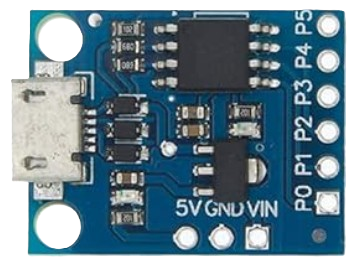
 Design with ATTiny85 in Cirkit Designer
Design with ATTiny85 in Cirkit DesignerIntroduction
The ATTiny85 is a small, low-power microcontroller from Atmel's AVR family, designed for embedded systems and DIY electronics projects. It features an 8-bit architecture, 8 KB of flash memory, 512 bytes of SRAM, and 6 I/O pins, making it a versatile choice for compact and low-power applications. Its small size and ease of programming make it a popular choice among hobbyists and professionals alike.
Explore Projects Built with ATTiny85
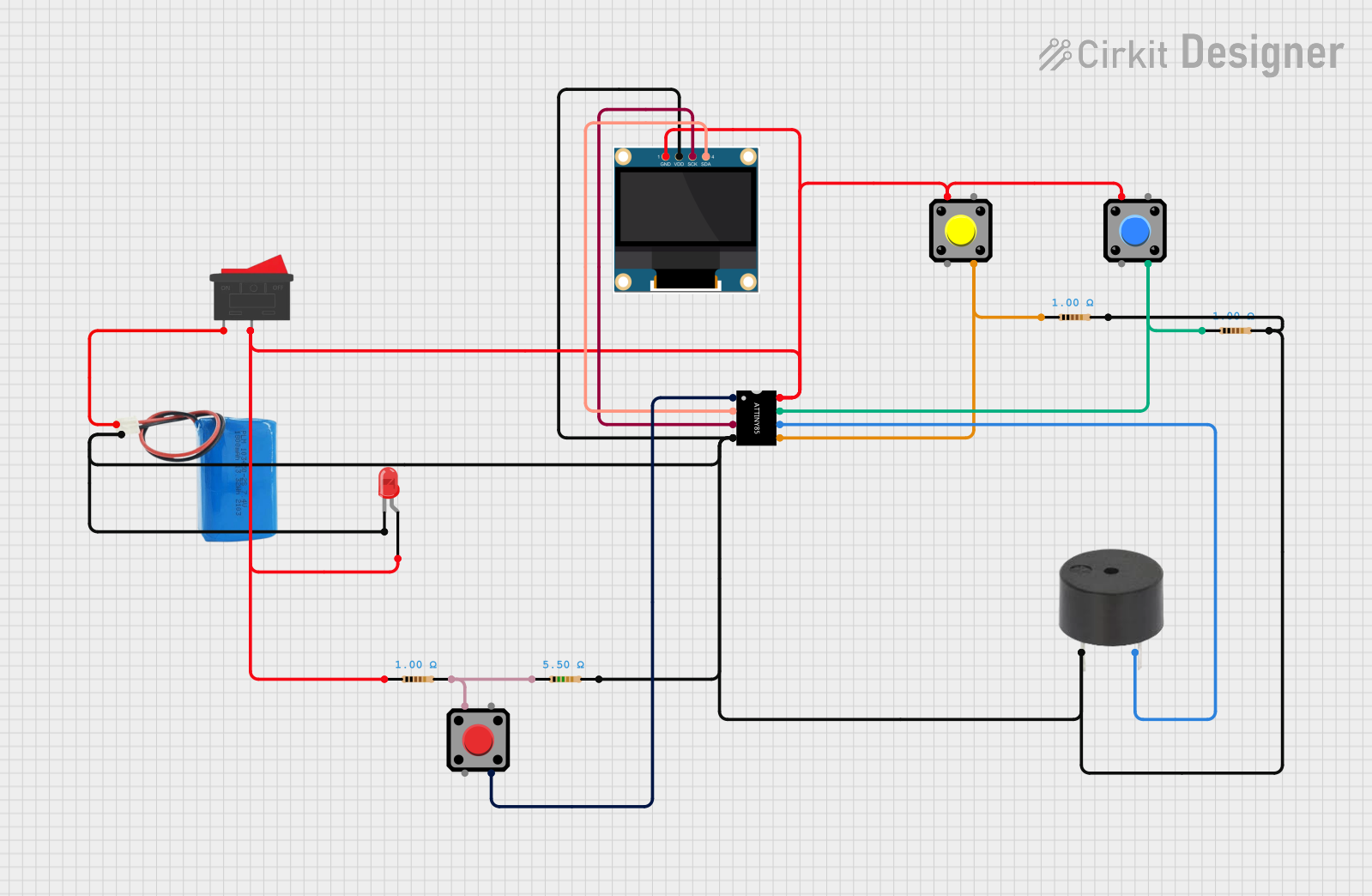
 Open Project in Cirkit Designer
Open Project in Cirkit Designer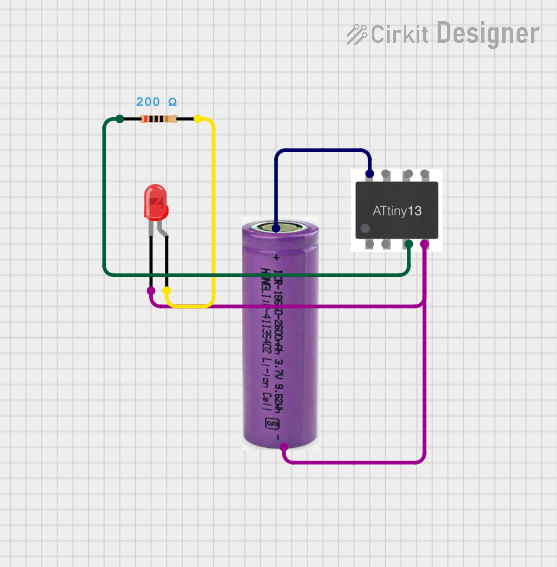
 Open Project in Cirkit Designer
Open Project in Cirkit Designer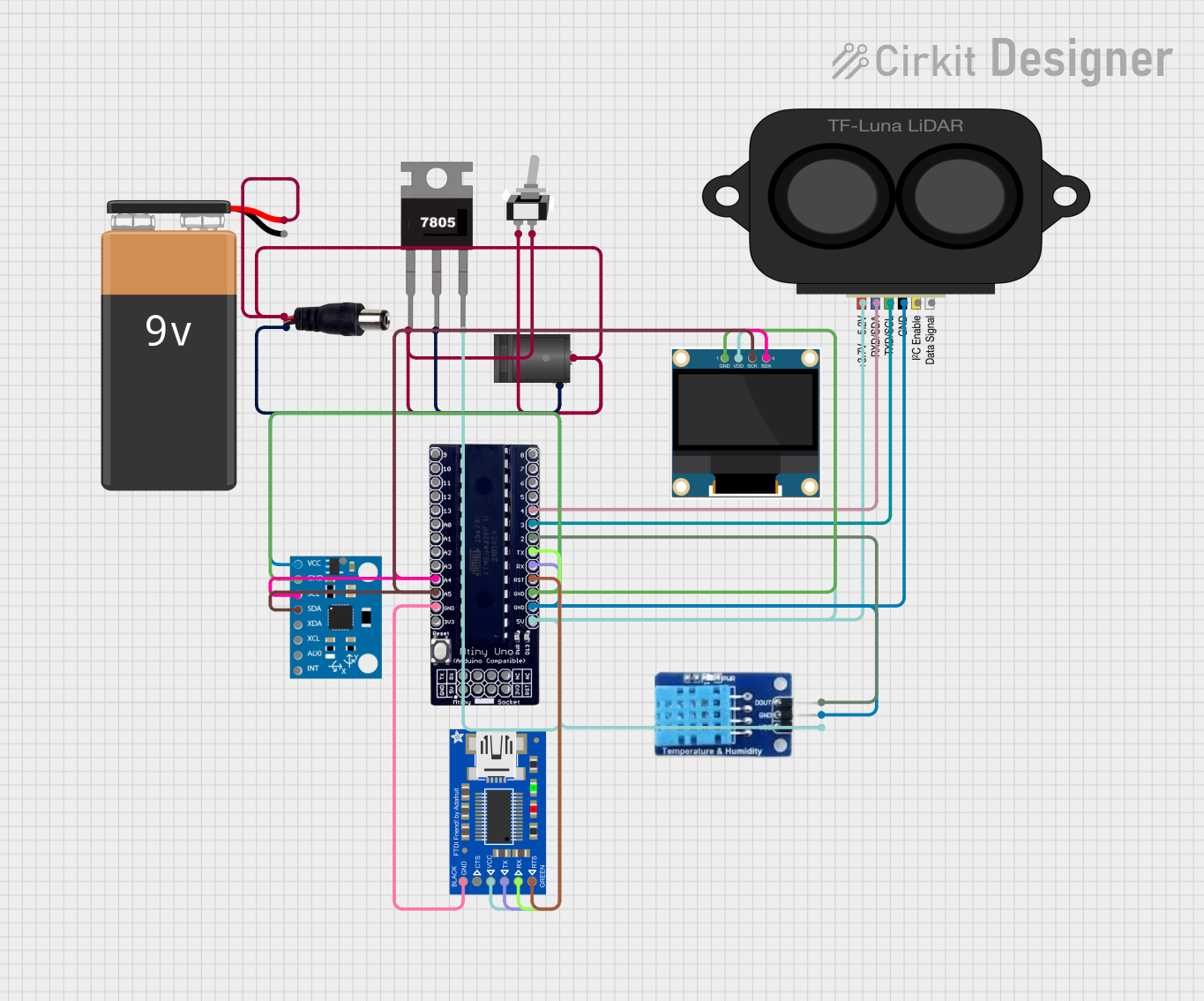
 Open Project in Cirkit Designer
Open Project in Cirkit Designer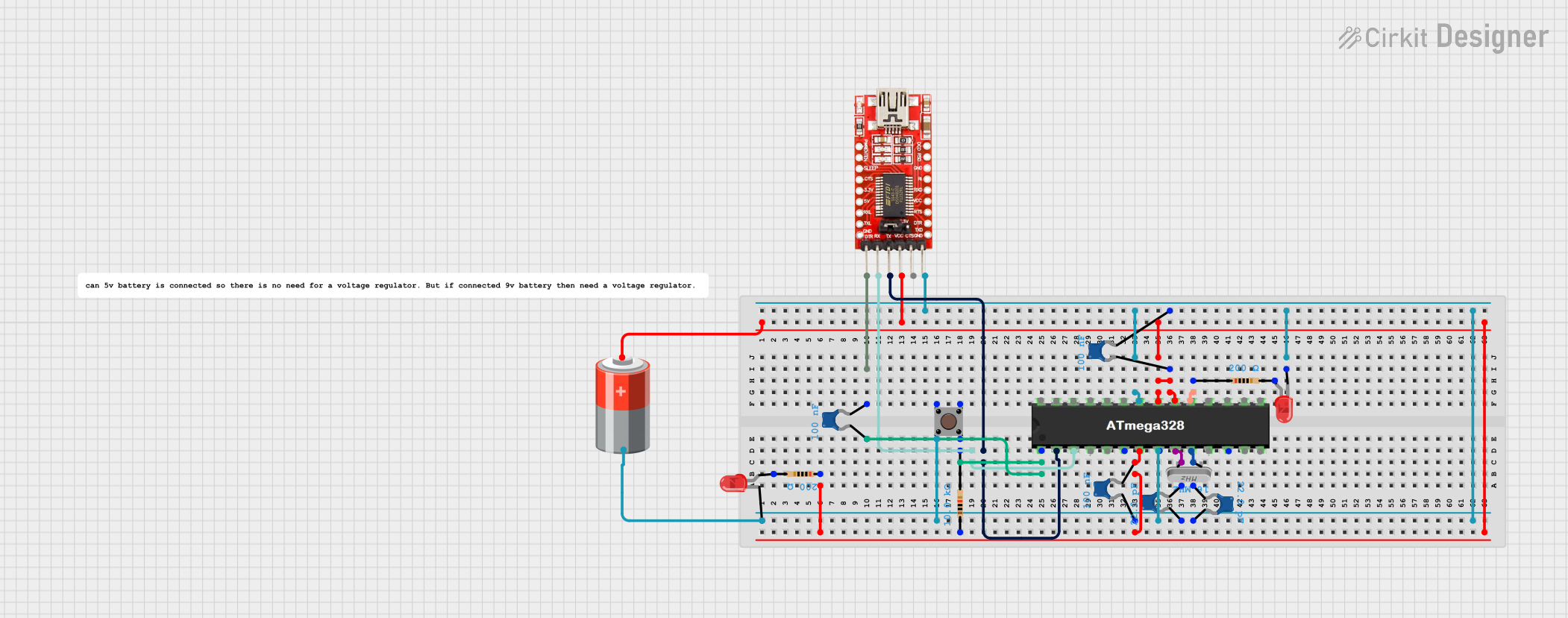
 Open Project in Cirkit Designer
Open Project in Cirkit DesignerExplore Projects Built with ATTiny85

 Open Project in Cirkit Designer
Open Project in Cirkit Designer
 Open Project in Cirkit Designer
Open Project in Cirkit Designer
 Open Project in Cirkit Designer
Open Project in Cirkit Designer
 Open Project in Cirkit Designer
Open Project in Cirkit DesignerCommon Applications and Use Cases
- Wearable electronics
- IoT (Internet of Things) devices
- LED control and lighting systems
- Sensor-based projects
- Small robotics and automation systems
- Battery-powered devices
Technical Specifications
The ATTiny85 is a highly capable microcontroller with the following key specifications:
| Parameter | Value |
|---|---|
| Architecture | 8-bit AVR |
| Flash Memory | 8 KB |
| SRAM | 512 bytes |
| EEPROM | 512 bytes |
| Operating Voltage | 2.7V - 5.5V |
| Clock Speed | Up to 20 MHz (with external clock) |
| I/O Pins | 6 |
| ADC Channels | 4 (10-bit resolution) |
| PWM Channels | 2 |
| Timers | 2 (8-bit) |
| Communication Interfaces | SPI, I²C (TWI), and UART (via USI) |
| Power Consumption | Low-power modes available |
| Package | 8-pin PDIP, SOIC, or QFN |
Pin Configuration and Descriptions
The ATTiny85 comes in an 8-pin package. Below is the pinout and description:
| Pin Number | Pin Name | Description |
|---|---|---|
| 1 | PB5 (RESET) | Reset pin (active low) or GPIO |
| 2 | PB3 (ADC3) | GPIO, ADC input channel 3, or SPI MOSI |
| 3 | PB4 (ADC2) | GPIO, ADC input channel 2, or SPI MISO |
| 4 | GND | Ground |
| 5 | PB0 (ADC0) | GPIO, ADC input channel 0, PWM output, or SPI SCK |
| 6 | PB1 (ADC1) | GPIO, ADC input channel 1, PWM output |
| 7 | PB2 (ADC4) | GPIO, ADC input channel 4, or I²C SDA |
| 8 | VCC | Power supply (2.7V - 5.5V) |
Usage Instructions
The ATTiny85 is a versatile microcontroller that can be programmed using the Arduino IDE or other AVR programming tools. Below are the steps to use the ATTiny85 in a circuit:
Programming the ATTiny85
Setup the Arduino IDE:
- Install the ATTiny85 board package in the Arduino IDE by adding the following URL to the "Additional Board Manager URLs" in the preferences:
https://raw.githubusercontent.com/damellis/attiny/ide-1.6.x-boards-manager/package_damellis_attiny_index.json - Go to "Tools > Board > Boards Manager" and install the "ATTinyCore" package.
- Install the ATTiny85 board package in the Arduino IDE by adding the following URL to the "Additional Board Manager URLs" in the preferences:
Connect the ATTiny85 to a Programmer:
- Use an Arduino UNO as an ISP (In-System Programmer) or a dedicated USB programmer.
- Connect the pins as follows:
Arduino UNO Pin ATTiny85 Pin 10 (RESET) Pin 1 (RESET) 11 (MOSI) Pin 2 (PB3) 12 (MISO) Pin 3 (PB4) 13 (SCK) Pin 5 (PB0) GND Pin 4 (GND) 5V Pin 8 (VCC)
Select the Board and Programmer:
- In the Arduino IDE, go to "Tools > Board" and select "ATTiny85".
- Set the clock speed (e.g., 8 MHz internal oscillator).
- Choose the programmer (e.g., "Arduino as ISP").
Upload Code:
- Write your code in the Arduino IDE and upload it to the ATTiny85 using "Sketch > Upload Using Programmer".
Example Code: Blinking an LED
The following example demonstrates how to blink an LED connected to Pin 0 (PB0) of the ATTiny85:
// Blink an LED on ATTiny85 Pin 0 (PB0)
#define LED_PIN 0 // Define the LED pin (PB0)
void setup() {
pinMode(LED_PIN, OUTPUT); // Set the LED pin as an output
}
void loop() {
digitalWrite(LED_PIN, HIGH); // Turn the LED on
delay(500); // Wait for 500 milliseconds
digitalWrite(LED_PIN, LOW); // Turn the LED off
delay(500); // Wait for 500 milliseconds
}
Important Considerations
- Power Supply: Ensure the ATTiny85 is powered within its operating voltage range (2.7V - 5.5V).
- Clock Source: By default, the ATTiny85 uses an 8 MHz internal oscillator. For higher speeds, an external crystal or resonator is required.
- Pull-Up Resistors: If using the RESET pin as a GPIO, disable the reset functionality in the fuse settings and use a pull-up resistor.
Troubleshooting and FAQs
Common Issues
Problem: The ATTiny85 is not detected by the programmer.
Solution:- Check the wiring between the programmer and the ATTiny85.
- Ensure the correct board and programmer are selected in the Arduino IDE.
- Verify that the ATTiny85 is powered correctly.
Problem: The uploaded code does not run as expected.
Solution:- Double-check the pin assignments in your code.
- Ensure the correct clock speed is selected in the Arduino IDE.
Problem: The LED does not blink in the example code.
Solution:- Verify that the LED is connected to the correct pin (PB0).
- Check the polarity of the LED and the resistor value (e.g., 220Ω).
FAQs
Can I use the ATTiny85 with I²C sensors?
Yes, the ATTiny85 supports I²C communication using the USI (Universal Serial Interface). Libraries like TinyWire can simplify I²C communication.How do I reset the ATTiny85 to factory settings?
Use a high-voltage programmer to reset the fuse bits to their default values.Can I use the ATTiny85 for battery-powered projects?
Yes, the ATTiny85 is ideal for low-power applications. Use sleep modes to conserve power when the microcontroller is idle.